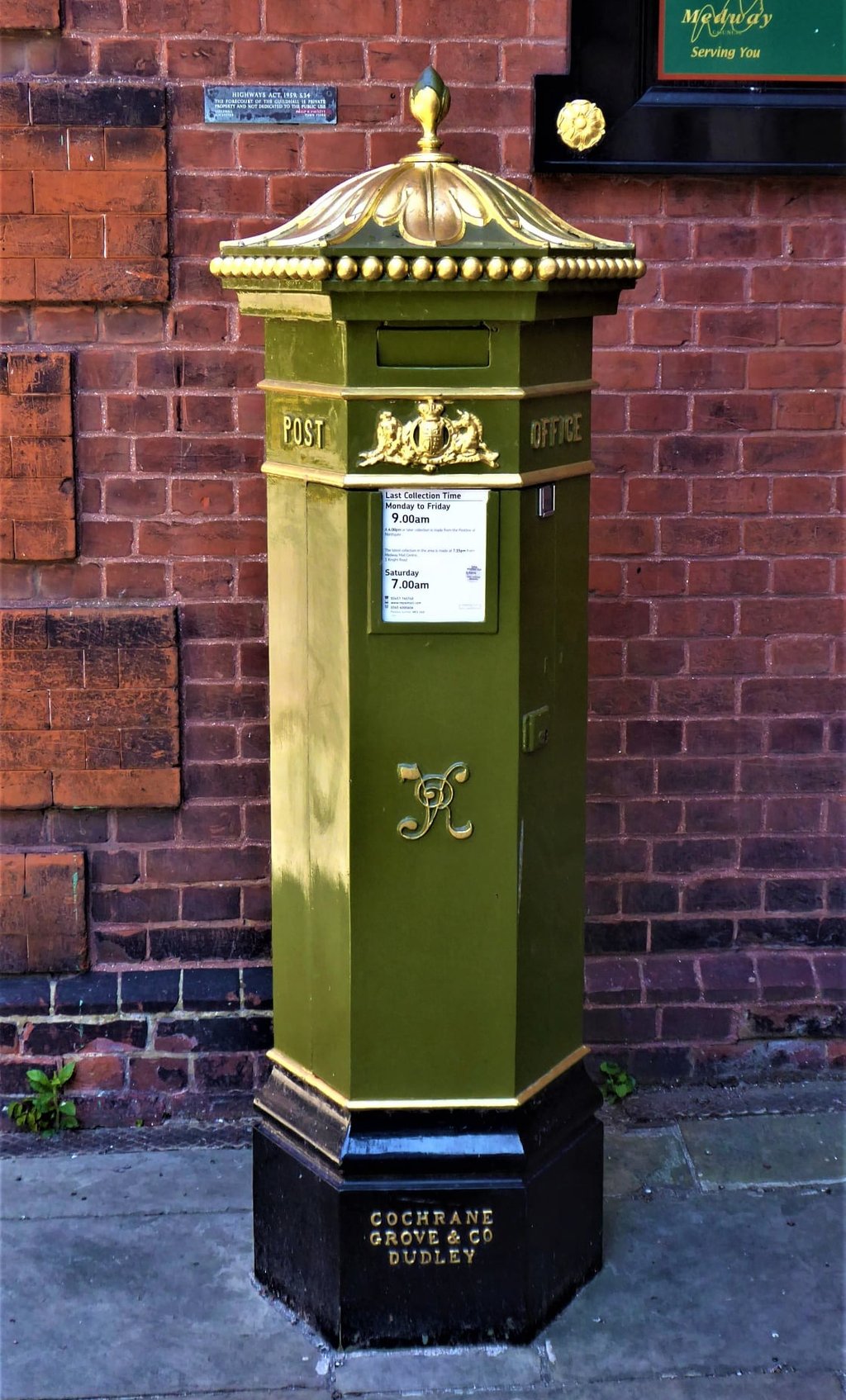A unique piece of British social history
Almost hiding away out of sight, on the pavement outside The Guildhall Museum in Rochester High Street, is something we should be proud of in the town the Daily Mail called ‘Britain at its best!’.


When post boxes were first introduced in the UK, in the Channel Islands on 23rd November 1852, they were an instant success and iron foundries across the country raced to compete with each other to produce ‘the perfect post box’.
The result was that the British Isles became quickly infested with thousands of, quite frankly, hideous ‘takes’ on what precisely was ‘the perfect post box’.
This got to such a sad state by 1866, that the head of the Royal Mail approached a 38 year old architect named John Wornham Penfold to design something ‘more elegant’...
He did... and the post box he designed became known as ‘the Penfold Box’. By 1879, there were 36,000 of them across the UK, with many more cast and installed in other corners of the British Empire, most notably New Zealand and South Africa.
But, there was a drawback to the Penfold Box. It cost rather a lot to produce and, in the cost cutting late Victorian era, a cheaper alternative was sought. That became the post box we know today – a simple cylinder with a bolted-on domed top. It cost less than 20% of what a Penfold Box cost to make, so quickly started to replace them.
Today, around 300 Penfolds are thought to survive, most of which are in collections. But, in the UK, 20 are still in daily Royal Mail use and, in addition to being one of those twenty, the ‘Rochester Penfold’ is the ONLY one to be maintained in the original colour scheme – Bronze-Green (not ‘green and gold’!)
So... how did we get from that elegant colour scheme, to today’s ‘Pillar Box’, or ‘Royal Mail’, Red?
Well... there is another drawback to the Penfold design. Take a look at those nice baubels around the top. From personal experience I can assure you that, if you happen to hit your head on one, it don’t arf ‘urt!
By 1874, Royal Mail was getting a little ‘peeved’ at the number of personal injury claims (no, they are NOT a modern phenomenon!) from people running or walking into them at night. Bronze-Green looks lovely in daylight, but at night it is the perfect camouflage colour. The Army paints tanks in something very similar (with the delightful name of Olive Drab – yuk!) to hide them!
To address this, a test was carried out in a field in the area where Milton Keynes is today. Thirty post boxes were lined up, each painted a different colour, and the street lighting of the day (from candles to gas mantles) was offered up to each one to see which reflected best.
It was immediately clear that red was the winner. So all 30 boxes were repainted in differing shades of red until the best shade was found – and that is what we call ‘Royal Mail Red’ to this day. It was nothing to do with a Victorian marketing guru telling Royal Mail that Bronze-Green doesn’t ‘meet with your core values’ – it was a simple expedient to cut down payouts to injured members of the public!
And believe it or not, there is a link between the Penfold boxes and the children’s book and TV character, Danger Mouse.
Ever wondered why his sidekick is called Penfold? He is actually named in memory of John Wornham Penfold because, at least in the books, Danger Mouse’s secret hideout was in a post box in Baker Street, London. Unfortunately, that box wasn’t a Penfold. It was its replacement known as an ‘anonymous box’.
If you go to Cheltenham anytime, you can find no fewer than eight of the remaining Penfolds, there’s also one in Folkestone and another near the Guildhall in Faversham. All of those are painted Royal Mail Red.
Ours is the ONLY ONE maintained as the Victorians would have known it – including Charles Dickens, as this very box used to be sited in Dock Rd, Chatham for the last four years of his life – in all its elegant splendour...

